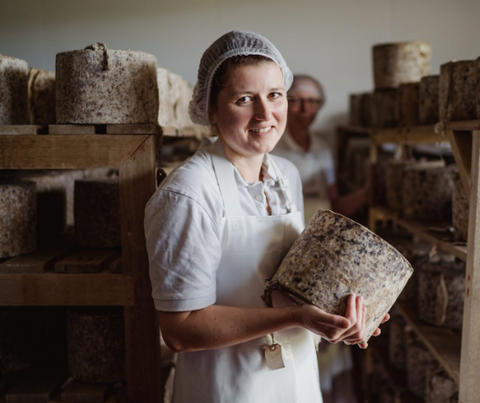Top Cheese Makers in Melbourne: The Tale of Floridia Cheese Thomastown
Top Cheese Makers in Melbourne: The Tale of Floridia Cheese Thomastown
Blog Article
Opening the Tricks of Artisanal Cheese Making: A Detailed DIY Overview
In the world of cooking workmanship, artisanal cheese making stands as a testimony to the fragile equilibrium in between practice and technology. As we embark on this journey to demystify the art of producing splendid cheeses, we are faced with a tapestry of abilities and secrets waiting to be unwinded.
Choosing the Right Milk
When getting started on the journey of artisanal cheese making, the choice of milk plays a vital role in identifying the quality and attributes of the last item. The type of milk chosen impacts the taste, texture, and generally account of the cheese.
When choosing milk for cheese making, it is very important to think about the fat content. Greater fat content in milk can cause a creamier and richer cheese, while reduced fat content might result in a drier and firmer structure. In addition, the source of the milk, whether from cows, goats, lamb, or buffalo, contributes distinctive flavors and features to the cheese (Melbourne Made Cheese). Each kind of milk brings its very own nuances, enabling for a broad variety of cheese varieties to be crafted based upon the picked milk. Eventually, the choice of milk is a basic choice that establishes the structure for a successful artisanal cheese-making undertaking.
Culturing and Coagulating
To launch the cheese-making procedure, the crucial steps of culturing and coagulating have to be meticulously carried out to change milk right into curds and whey. Culturing includes introducing valuable germs to the milk, which then begins the fermentation procedure. These germs convert lactose (milk sugar) into lactic acid, creating the acidic atmosphere needed for coagulation. The sort of society used can significantly influence the taste, appearance, and ripening of the last cheese item.

The timing and temperature level control throughout culturing and coagulation are crucial factors that affect the final outcome of celebrity. Appropriate execution of these steps is important to guarantee the desired structure, flavor, and consistency of the artisanal cheese being generated.
Draining and Pushing Curds
After the milk healthy proteins have actually coagulated and the curds have been reduced to release whey, the following vital action in artisanal cheese making includes draining pipes and pressing the curds to accomplish the wanted structure and consistency of the last cheese product. Draining is the procedure of separating the curds from the whey. This can be done by transferring the curds right into a cheesecloth-lined colander or mold and enabling the whey to drain pipes off normally. The moment for draining can differ relying on the kind of cheese being made and the desired dampness web content.
Pressing assists get rid of any article type of continuing to be whey and compacts the curds to develop a strong cheese wheel. Proper draining pipes and pressing are crucial actions that significantly impact the high quality and features of the artisanal cheese being generated.
Aging and Flavoring Techniques
Applying meticulous aging and flavor methods is essential in boosting the depth and intricacy of artisanal cheeses, boosting their taste accounts to beautiful degrees of improvement and class. Aging plays a critical duty in developing the unique tastes and textures that distinguish artisanal cheeses. During the aging procedure, cheeses are stored in carefully controlled atmospheres where variables such as moisture, temperature level, and airflow are adjusted to motivate the development of useful mold and mildews and germs. This controlled environment allows celebrity to mature slowly, creating complex scents and abundant tastes.
Flavoring techniques likewise contribute considerably to the last taste of artisanal cheeses. Cheesemakers may pick to present additional flavors by including ingredients such as natural herbs, seasonings, or also fruits into celebrity during the production procedure. In addition, some cheeses are washed or massaged with numerous liquids, such as brine or alcohol, to boost their tastes and textures.
Covering and Saving Cheeses

Verdict
In verdict, understanding the art of artisanal cheese making entails carefully selecting the appropriate milk, adhering to precise culturing and coagulating procedures, draining and pressing curds properly, and utilizing numerous aging and flavoring methods. Keep in mind to cover and save your cheeses properly to make sure ideal flavor and texture growth.
Each type of milk brings its own nuances, enabling for a large range of cheese ranges to be crafted based on the chosen milk.After the milk proteins have actually coagulated and the curds have been cut to release whey, the next crucial action in artisanal cheese making involves draining and pressing the curds to accomplish the desired structure and consistency of the last cheese item. The majority of cheeses must be wrapped in wax paper or cheese paper to enable them to take a breath while shielding them from drying out. For cheeses that need to continue aging, such as bloomy peels or cleaned rinds, guarantee they are stored in a cool environment like a cheese cavern or a fridge established to the ideal temperature. By paying focus to the covering and storage space of artisanal cheeses, cheese manufacturers and enthusiasts can protect the honesty of these specials and completely appreciate their complex flavors.
Report this page